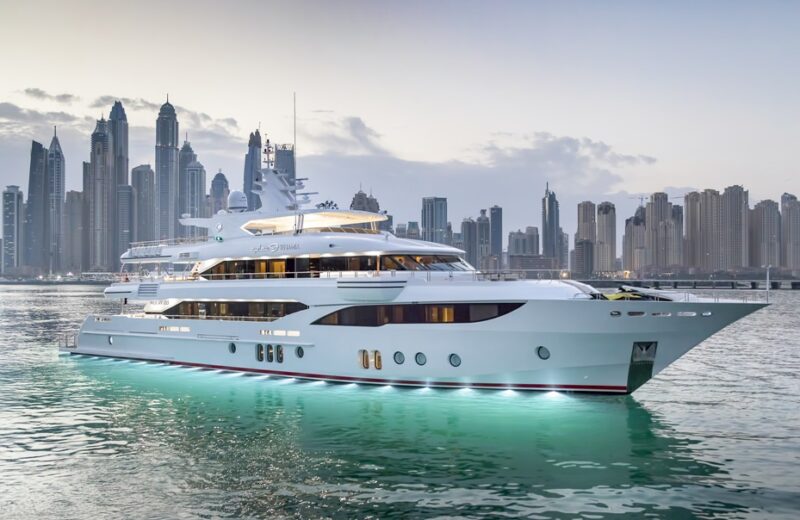Gulf Craft explores different yacht ownership options

When Erwin Bamps joined Gulf Craft as CEO in 2002, his main task was to scale up the business. At the time, the company was building smaller vessels, but its intention was clear. It first wanted to build yachts, then superyachts, and get a global presence.
With headquarters in Ajman, United Arab Emirates, Gulf Craft originally began targeting potential Middle East customers who were right on its doorstep. The increase in wealth in the Emirates, and later south east Asia, helped the company grow, and now it has three shipyards in the Gulf, and a further one in the Maldives, employing just over 1,500 people across all locations.
Although Gulf Craft is growing, Bamps believes that, for the industry to grow further, we need to look more towards shared ownership.
He explains that the globalisation of the super wealthy means that they are less likely to split their time between home and a vacation spot. Owners do not want to be tied to a specific location or area, and the cost of moving the yacht between locations is prohibitive, even for the super rich.
“The affluent citizens of the world are all world citizens today, and they think about how they can get these experiences spread across different areas. This is the challenge for us, providing hardware like private jets or yachts, with a portability, moving these around so that people can enjoy it,” he says.
To help with this globalisation, Gulf Craft provides a global warranty on all of its yachts, but it can also help owners move their yachts around the world. The services department can help source the crew, as well as arranging the use of different yards around the world. “The people in our services department are no longer just electricians or mechanics worried about the functions of the engines or the electrical systems. They are thinking more about what the experience of the guests on board are going to be,” says Bamps.
One idea that the company is looking closely at is shared ownership, with Gulf Craft saying that it can work in two different ways. The first of these is through a group of friends getting together and jointly splitting the costs. Gulf Craft has already been involved in a deal like this, with three friends getting together and splitting the costs equally three ways.
The second way is through a syndication that can be arranged by a broker. Gulf Craft’s dealer Australian Superyachts recently unveiled a commercial syndication scheme, which will use the Majesty 100 yacht.
Potential syndication members can buy between half and a quarter share of the yacht, with the prices starting at around AUD $2.3 million for the lowest share, and AUD $4.6 million for half, excluding taxes. Owners would then pay ongoing monthly maintenance costs based on the percentage of the yacht they have bought. The outgoings per month are quoted as ranging from AUD $17,000 to AUD $32,000, again based on the share size.
Although the yacht will be owned by the syndicate members, Australian Superyacht will manage the craft on their behalf. This will be done on a commercial basis, with the possibility of offsetting some of the ownership costs through charter revenue.
As other industries have moved more towards the sharing economy, the yachting industry is looking to do the same. Uber revolutionised the taxi industry and companies like JetSmarter and Victor are trying to do the same in private aviation.
But the one thing that they both have that yachting doesn’t is that they are modes of transport. They get you from A to B. Yachts don’t really do that. When you buy a yacht you aren’t only buying the asset, you are buying into a lifestyle.
And whilst that lifestyle is a lot more attractive if you can have that experience wherever you go, yachts are tremendously personal items. Their customers’ nature means that they are made to be a home away from home. But you won’t get that with syndicated yacht ownership – you’ll get a yacht with a neutral interior.
The shift away from selling yachts to selling yachting isn’t what Gulf Craft is doing. It is looking at it as a secondary revenue stream, as well as a way of introducing new people to the industry.
Buying your own yacht is expensive, but yachting is a lot more accessible.

